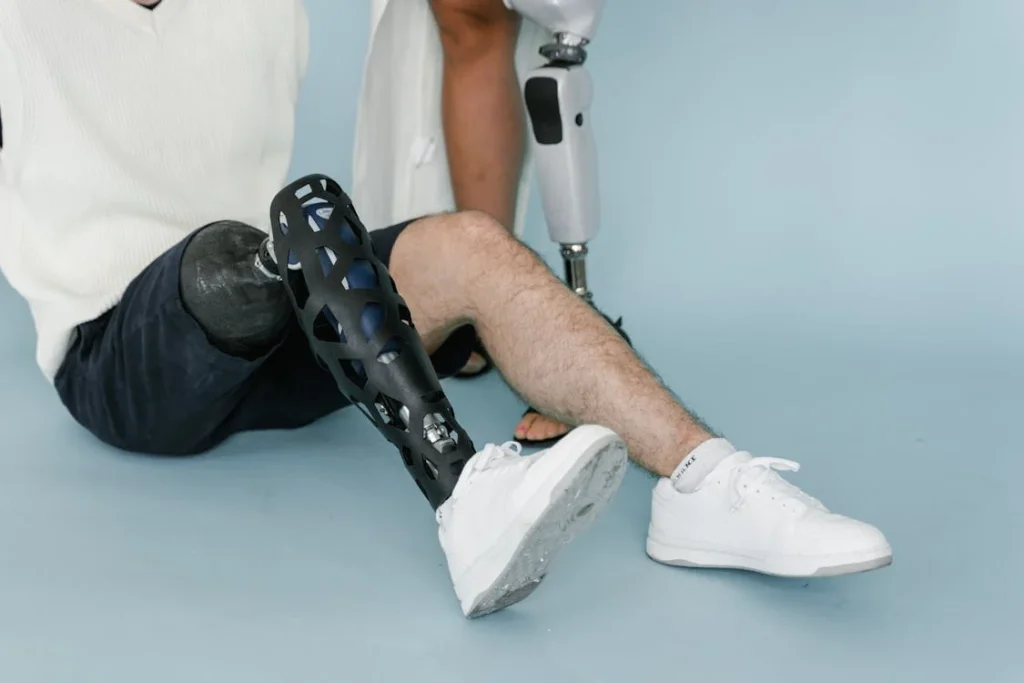Helping a child adapt to life with a prosthetic is a journey filled with both hope and hurdles. Kids grow fast, learn in their own ways, and need emotional care just as much as physical support. This makes pediatric prosthetics a very different challenge compared to adults. It’s not just about making a smaller version of an adult limb — it’s about building something that grows with the child, fits into their active lifestyle, and supports their emotional well-being.
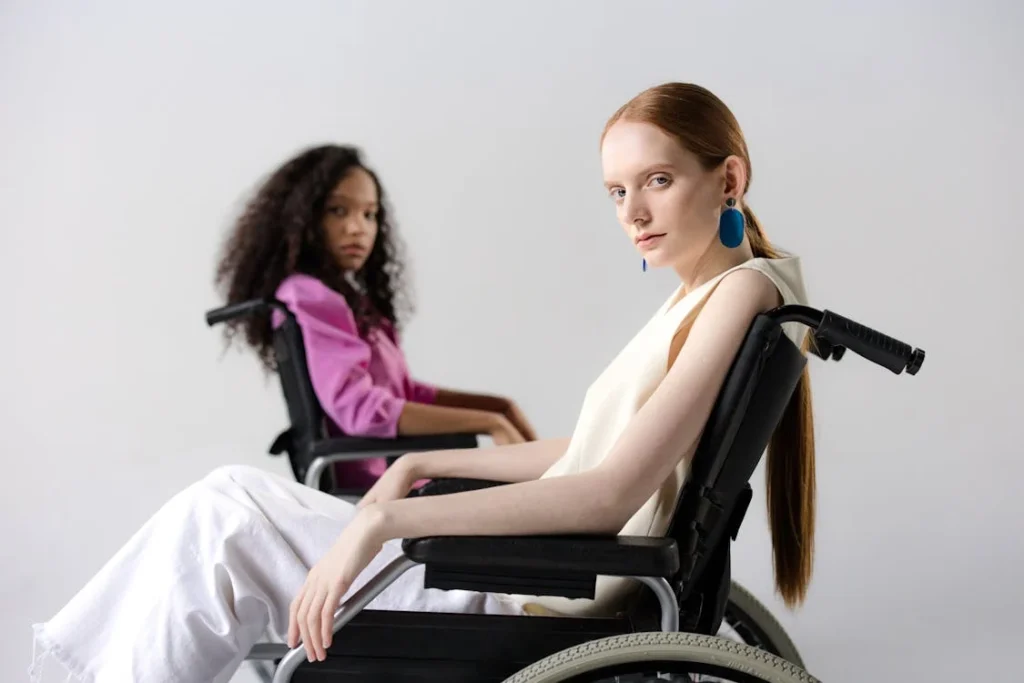
Understanding the Unique Needs of Children
Working with children who need prosthetics is never a one-size-fits-all process. Kids are still growing, learning about their bodies, and figuring out how they fit into the world.
Their physical, emotional, and social needs are very different from adults. That’s why pediatric prosthetics must be treated with special care and understanding right from the beginning.
Growth Happens Fast — and Often
One of the biggest challenges in pediatric prosthetics is how quickly a child grows. Their limbs get longer, their muscles get stronger, and their bones change shape.
What fits today may be too small in just a few months. This isn’t just an inconvenience — it can affect how the child walks, plays, and feels. A poorly fitting prosthetic can cause pain, limit movement, or even lead to long-term joint problems if not managed properly.
To stay ahead of this, regular check-ups are critical. Children need to be seen more often than adults so their prosthetic can be adjusted, resized, or replaced as needed.
Ideally, appointments every 3 to 6 months allow clinicians to catch issues early. Parents also play a key role by noticing changes in how the prosthetic fits or if their child starts walking differently or avoiding certain activities.
Kids Are Active — And That’s a Good Thing
Children are naturally curious and full of energy. They run, jump, climb, and fall. This kind of movement is important for their physical and mental development, but it also puts more stress on their prosthetic devices.
Pediatric prosthetics must be tough, flexible, and able to handle lots of daily wear and tear. They should also be designed to support playful, unpredictable movement, not limit it.
The tricky part is balancing strength with comfort. A prosthetic that is too heavy or stiff can make it harder for a child to move naturally.
On the other hand, a device that’s too light or fragile may not hold up well under pressure. Designers have to think carefully about the materials and how each part of the prosthetic supports the child’s movement.
When the design is right, kids are more likely to forget they’re wearing a device — and that’s often a sign that it’s working well.
Emotional Support Matters More Than We Realize
For many children, using a prosthetic comes with mixed feelings. Some may feel proud and excited, while others may feel frustrated, embarrassed, or left out.
These emotions can shift quickly and are often influenced by how others around them react — especially their peers at school. If a child is teased or excluded, they may avoid wearing their prosthetic altogether, even if it helps them move better.
This emotional side of the journey is just as important as the physical one. Open conversations, age-appropriate counseling, and support from school staff can make a big difference.
Families that talk openly about the prosthetic, answer their child’s questions honestly, and offer encouragement help build confidence.
Children who feel understood and accepted are more likely to wear their prosthetic with pride and keep using it consistently.
Creating positive peer experiences can also help. Schools that include disability awareness programs, or even just stories and books with kids who wear prosthetics, can shift the social environment in a healthy way.
Every Stage of Development Brings New Challenges
A toddler learning to walk has different needs than a teenager who wants to play sports or hang out with friends. Pediatric prosthetics have to evolve not just with the child’s body, but also with their interests, goals, and routines.
As children grow up, they want more independence. They start caring more about how things look and how their friends react. This means the prosthetic’s appearance and ease of use matter more as they get older.
Younger children might benefit from simpler devices that help them learn basic movements and feel secure. These early experiences build the foundation for future use.
As they age, kids may want devices that allow more complex tasks, like riding a bike or playing an instrument. Teens, especially, want devices that look good and match their sense of identity. A prosthetic that feels clunky or childish can be a real barrier.
Having options — and being part of the decision-making — helps children feel more ownership.
When kids can choose colors, patterns, or even functional add-ons, they’re more likely to connect with the device and keep using it.
Finding the Right Fit Isn’t Always Easy
Getting a pediatric prosthetic to fit well takes patience. Unlike adult users who can explain what feels right or wrong, young children often can’t put their discomfort into words.
They might cry, refuse to wear the device, or avoid using the affected limb. These reactions can be confusing for caregivers and challenging for prosthetists.
The fitting process needs to be gentle, flexible, and based on observation as much as direct feedback. Experts may look at how a child walks, stands, or plays to understand what needs to change.
Even small pressure points can lead to big issues over time, so attention to detail is key.
When children are involved in fittings in a fun and friendly way — using play, colors, or games — the experience becomes less scary and more empowering. It also helps build trust between the child, the caregiver, and the prosthetic team.

Communication Between Families and Clinicians
One challenge that often gets overlooked is communication. Parents and caregivers want the best for their child, but they might not always know how to explain what they’re seeing or feeling.
On the other hand, clinicians and prosthetists might speak in technical terms that don’t always make sense to families. This gap can lead to missed signs, delays in treatment, or even frustration on both sides.
Building a Shared Language
For families new to prosthetics, the learning curve can feel steep. There are new words, new routines, and unfamiliar equipment. That’s why it’s important for the care team to speak clearly and simply, especially during early appointments.
Avoiding complicated medical terms and instead using simple words like “socket,” “grip,” or “strap” can help everyone stay on the same page. Families should feel encouraged to ask questions — even if they think the question is small.
Clear communication isn’t just helpful — it’s essential. It helps parents know what signs to watch for, when to schedule follow-ups, and how to help their child adjust at home.
It also helps prosthetists do their job better because they get more useful feedback.
When everyone speaks the same language, things just move more smoothly.
Listening to the Child’s Voice
Children may not always say what they’re feeling, but they do communicate in their own ways.
A child who suddenly stops playing with friends or avoids using their prosthetic could be trying to say something isn’t right. It’s important to take these signals seriously and create space for kids to share their thoughts.
Even young children can give helpful feedback if the conversation is simple and warm. Asking questions like “Does it feel too tight?” or “Is it hard to walk with this on?” can open the door.
Letting children bring a toy to appointments, or using drawings to explain their feelings, can also make things easier.
The more children feel heard, the more likely they are to keep using their prosthetic — and that’s the goal.
Care Must Extend Beyond the Clinic
Another challenge families face is continuing care at home. A prosthetic is only helpful if it’s used consistently and correctly. But life at home is busy. Parents juggle school, meals, jobs, and everything in between.
It’s not always easy to keep up with exercises, cleaning routines, or scheduled wear time. Over time, this can impact how well the child adapts to the device.
To support families, clinics can provide easy-to-follow guides, videos, or even simple checklists.
These resources should be made for real life — not perfect conditions. If a child doesn’t want to wear the prosthetic one day, that’s okay. What matters is understanding why and helping them get back on track without guilt or pressure.
Even simple habits like checking the skin each night for red spots, or talking about how the prosthetic felt during the day, can lead to better outcomes.
Support doesn’t end when the clinic door closes — it follows the family home.

The Cost Factor and How It Affects Access
One of the most pressing issues in pediatric prosthetics is cost. Prosthetic limbs are expensive, and since children grow so quickly, they often need new ones every year or two.
For many families, especially in lower-income regions, this can create stress and limit access to the care their child deserves.
Affordability Shouldn’t Limit Possibility
Parents often have to make tough choices between what is ideal and what they can afford. Some might delay getting a new prosthetic even if the current one doesn’t fit well.
Others might avoid certain types of advanced features or materials because of price. But delaying upgrades or using outdated devices can impact a child’s development and confidence.
To address this, some organizations are working on more cost-effective prosthetics made with 3D printing and modular parts.
These are lighter, more adaptable, and can be updated as the child grows without replacing the entire device. This kind of innovation is helping make pediatric prosthetics more reachable for more families.
There is also a growing need for better insurance coverage, subsidies, and government programs that include pediatric prosthetics as part of essential healthcare.
When prosthetics are treated as optional or cosmetic, families are left to carry the financial burden alone — and that isn’t fair.
Local Access Changes Everything
Another factor that affects cost and convenience is how close families live to a qualified clinic. In many parts of the world, especially rural areas, prosthetic services are not easy to reach.
This means families may have to travel long distances for fittings, adjustments, or repairs. That adds time, stress, and extra expense, especially if multiple visits are needed.
Having more local clinics — or even mobile prosthetic units — can ease this burden. When care is close by, it’s more likely to be consistent.
Children can get help when they need it, not just when the family can afford to travel. This makes a huge difference in long-term outcomes.
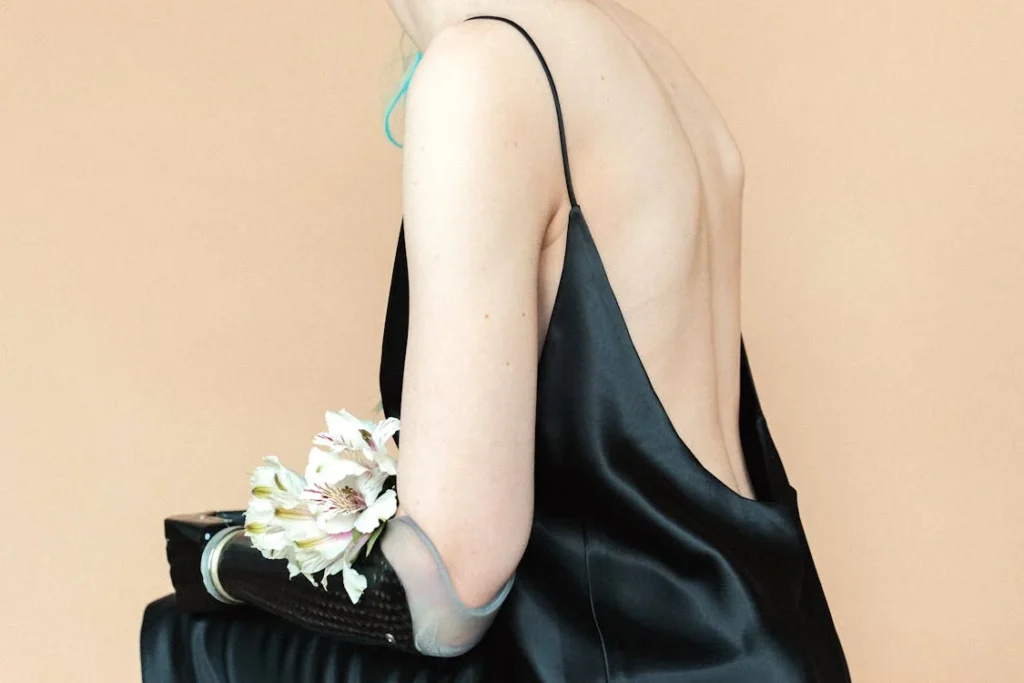
Technology and Play: Making Prosthetics a Part of Childhood
Children experience the world through play. It’s how they learn, build confidence, and connect with others. But when a child uses a prosthetic, especially early on, play can feel limited or frustrating.
Traditional rehab methods — repetitive exercises in clinical settings — don’t always work well for children. What’s missing is fun. When prosthetic use is woven into play, kids are not just learning how to move; they’re learning how to live with their device.
Why Play is a Powerful Tool
The act of playing is natural to kids. It removes pressure. It invites creativity. When children play, they’re not thinking about technique or therapy — they’re just in the moment.
But every reach, grab, balance, or step becomes part of their training. This is especially important when adapting to a new limb.
If a child sees their prosthetic as a tool for fun rather than a medical device, they’re far more likely to accept it.
That’s why some of the best rehabilitation programs are designed to look more like games than therapy.
Gamified Rehabilitation That Feels Like Fun
Newer pediatric rehabilitation tools include interactive video games, motion sensors, and augmented reality experiences. These systems reward small movements with visual effects, music, or scores that make therapy feel like playtime.
Children can control a game character by flexing a muscle or lifting their arm. Over time, these tiny movements build strength and coordination — without the child even realizing they’re doing rehab.
This approach turns learning into a challenge kids want to take on. Instead of feeling like they’re being asked to do something hard, they feel like they’re playing to win. It helps reduce frustration and builds a more positive relationship with their prosthetic.
At home, this kind of rehab is even more powerful. Families can use simple devices or apps to turn daily routines into playful moments.
For example, a child can earn points for stacking blocks, coloring with a marker using their bionic hand, or buttoning a shirt. These small wins make a big difference over time.
Making Prosthetics Themselves More Playful
The prosthetic itself can also become part of the fun. Today, there are more options for customization than ever before. Kids can choose colorful covers, superhero themes, animal prints, or even glow-in-the-dark parts.
These details might seem small, but they let children see the prosthetic as an extension of themselves — not something to hide.
When kids are proud to show off their prosthetic, it shifts how they interact with others. They might be more willing to answer questions, join group activities, or take part in sports. This boosts not only their physical ability but also their emotional confidence.
In fact, many children become ambassadors or role models for others after they’ve embraced their prosthetic. It starts with letting them have some say in how it looks and feels.
The Role of Schools and Teachers in Playful Adaptation
Another key space where play meets prosthetic use is at school. Teachers and staff can support children by including adapted games in physical education or letting them use their prosthetic in art class, music, or tech projects.
The more natural the use of the device becomes in everyday activities, the more confident the child will be.
But teachers need support too. They may not know how to include a child with a prosthetic or worry about safety.
Simple guidance, training, or even short info sessions from clinicians or prosthetic providers can go a long way in preparing schools to be inclusive and proactive.
Peer involvement also matters. Classmates can be taught — in age-appropriate ways — how prosthetics work and why some children use them.
This builds understanding and removes fear or judgment, making the social setting much more accepting.
When Play Becomes Exploration
As children grow more confident, play turns into exploration. They start asking, “What else can I do with this hand?” or “Can I play the guitar? Can I climb a tree?”
This curiosity leads to trying new things — and that’s exactly what pediatric prosthetics should encourage.
When prosthetics are introduced in ways that support exploration and expression, kids don’t feel held back by them. They feel equipped.
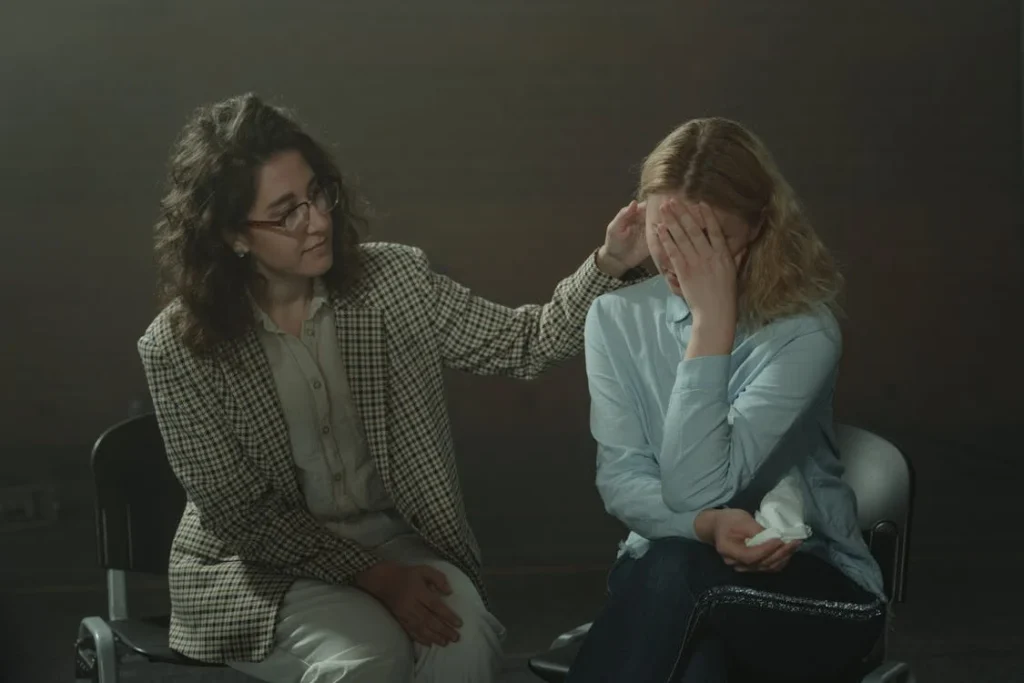
The Role of Family Dynamics in a Child’s Prosthetic Journey
Behind every child with a prosthetic is a family navigating their own emotions, hopes, and challenges. Parents are learning, adapting, and making big decisions.
Siblings are watching, sometimes quietly, sometimes loudly, and often with their own set of questions. Grandparents, aunts, uncles — they all play a role, too. How these dynamics unfold can strongly influence a child’s experience, for better or worse.
Parents: The First Support System
A parent’s mindset can shape everything. If a parent feels overwhelmed, anxious, or uncertain about the prosthetic, the child often picks up on it — even if it’s not said out loud.
Children are incredibly perceptive. They mirror what they see and feel. That’s why emotional support for parents isn’t just a luxury — it’s part of pediatric care.
Parents need time to grieve, ask hard questions, and adjust their expectations. Some feel guilty, others feel helpless.
All of it is valid. What helps is when they’re given space to talk openly with professionals, connect with other parents in similar situations, or even just hear, “You’re doing great.”
When parents feel more confident, their child usually does, too. That confidence translates into showing up for appointments, encouraging use at home, and celebrating progress — even when it’s small.
Siblings: The Silent Observers
Siblings sometimes struggle with feelings they can’t name. They might feel jealous of the attention their brother or sister is getting. Or they might worry but not want to ask questions.
Some take on a protective role. Others may pull away. Each reaction is shaped by age, personality, and the way the family talks about disability and difference.
That’s why it’s so important to include siblings in the journey. Let them come to clinic visits. Show them how the prosthetic works.
Encourage questions — even silly ones. Let them see that this is just part of life now, and they’re part of it, too.
Siblings who are included often become great allies. They help with routines, they support during school moments, and they create a sense of normalcy just by treating their sibling the same as always.
When excluded, they may carry silent guilt or confusion, which can build tension in the family.
Open, honest communication works wonders here. Saying things like, “I know this is different for all of us,” or “Do you want to ask anything about your brother’s hand?” can open doors without forcing a deep talk.
Extended Family: Understanding Without Pity
Grandparents and other relatives often mean well — but they may not know what to say or do. They might be overly protective, unintentionally limiting the child’s independence.
Or they may offer pity when what the child needs is support and encouragement. Some may even avoid the topic entirely, unsure of how to respond.
Helping extended family understand the child’s journey is key. That might mean showing them how the prosthetic works, or explaining that the child doesn’t need help with everything.
A quick conversation can go a long way: “They can do most things just fine. The best thing you can do is treat them like you always have.”
In some cases, cultural beliefs or generational views on disability may come into play.
These can be gently addressed by sharing progress stories, doctor explanations, or even videos that show what’s possible with today’s prosthetics.
When extended family is on board, it creates a safer, more unified space for the child to grow.
Creating a Supportive Home Environment
The environment at home is the testing ground for everything. It’s where the child practices putting on their prosthetic, where they learn to button shirts, where they fall and get back up.
A home that feels encouraging — not critical — gives children the freedom to try, fail, and try again.
Some homes benefit from small physical changes. A child learning to use a leg prosthetic might need a safer way to climb stairs or a better space to practice walking.
A child with a bionic arm might need lighter cups, velcro shoes, or tools with modified grips.
But the emotional tone matters just as much. When progress is praised instead of perfection expected, children grow. When effort is noticed, children feel seen.
It helps to set simple routines, too. A specific time for wearing the prosthetic each day. A fun task that involves using the device.
Little rituals that build comfort and habit — without turning it into a chore.
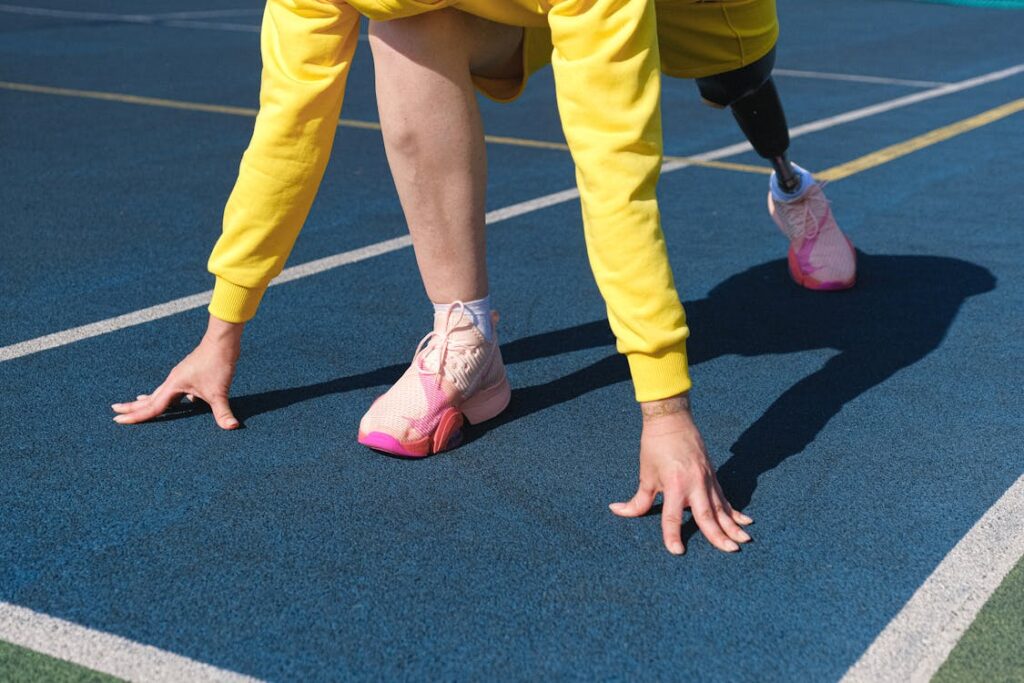
First-Time Prosthetic Use: Born Without vs. Acquired Limb Loss
For children stepping into the world of prosthetics, that “first time” is a big deal. It’s not just about learning how to use a new device — it’s about how they see themselves, how they fit in, and what this new piece of technology means to their identity.
But what often gets missed is that not all first prosthetic experiences start from the same emotional place.
A child born without a limb grows up never knowing anything different. Their body is their “normal.”
On the other hand, a child who had a limb and then lost it — maybe due to an accident, infection, or surgery — goes through a completely different emotional path that involves grief, confusion, and adjustment.
Understanding the difference between these two stories can help caregivers, clinicians, and educators better support the child from day one.
Born Without: Normal Until the World Says Otherwise
Children born without a limb usually don’t think of themselves as missing anything — at least not at first. They figure out their own way of crawling, eating, building blocks, and doing everything else.
For them, there’s no “before” and no loss to process. Their body simply is.
It’s often only when they enter social spaces — like daycare, preschool, or playgrounds — that they begin to notice they’re “different.” Maybe it’s the way kids stare.
Or maybe it’s the questions, like “What happened to your hand?” Suddenly, they realize that others are experiencing their body in a way they hadn’t considered.
That’s when the prosthetic becomes more than a tool. It can become a bridge to belonging — or a symbol of being “fixed,” which can be harmful if handled the wrong way.
Children in this group often need support in understanding why a prosthetic might help them, especially if they’ve been doing fine on their own. The device must be introduced not as a correction, but as a cool option — a way to try new things, to explore, to play.
Choice is key here. If they feel forced or pressured, resistance grows. But if the prosthetic is offered as something fun or empowering, it becomes a tool of self-expression and possibility.
Acquired Limb Loss: A Story of Change and Grief
The journey is very different for children who once had a limb and then lost it. They remember what it was like to use two hands or walk without help. Their prosthetic journey starts with loss. And no matter how strong they are, that loss brings grief.
Some children experience this grief through anger or sadness. Others withdraw or pretend everything is fine. It often depends on age, personality, and how the loss occurred.
A traumatic accident may create fears around movement, while a surgical removal due to illness may come with other health challenges.
These children need time. They need space to talk, to feel, to adapt. They need mental health support just as much as physical therapy. And when the prosthetic is introduced, it can stir up complex emotions.
Some might see it as a reminder of what they lost. Others might pin all their hopes on it, only to feel let down when it doesn’t work exactly like their old limb.
This is where realistic expectations matter deeply. The care team must walk a fine line between encouragement and honesty — celebrating what’s possible without overselling what isn’t.
Children need to know: it’s okay to be frustrated. It’s okay to miss your old self. And it’s absolutely okay to still dream big.
A child who feels seen and supported through this emotional transition is far more likely to eventually embrace their prosthetic — and their new way of moving through the world.
The Role of Storytelling and Role Models
No matter how a child enters the world of prosthetics, stories can be powerful tools.
Seeing others like them — whether in person or through books, shows, or social media — can help normalize their experience. Hearing “me too” changes everything.
For a child born without a limb, seeing a teen who plays guitar with a bionic hand can spark inspiration. For a child who lost a limb in a car accident, meeting someone who returned to sports after injury can light the path forward.
These aren’t just stories — they’re emotional anchors. They say, “You’re not alone,” and “There’s more ahead.”
Clinics, schools, and families can help by bringing in guest speakers, sharing video clips, or simply talking about famous people and local heroes who use prosthetics.
Not in a “look how amazing they are” way — but in a real, grounded, human way that shows life goes on, joy returns, and dreams remain possible.
Conclusion
Every child’s journey with a prosthetic is unique — shaped by their body, their story, and the world around them. From rapid growth and emotional adjustment to the role of play, family, and identity, pediatric prosthetics are about much more than just mobility. They’re about building confidence, fostering independence, and helping children feel seen and supported as they grow.
Success doesn’t come from the device alone. It comes from listening to the child, supporting the family, and making the prosthetic part of a joyful, everyday life. With the right care, the right mindset, and the right community, a prosthetic can become not just a tool — but a bridge to possibility.



